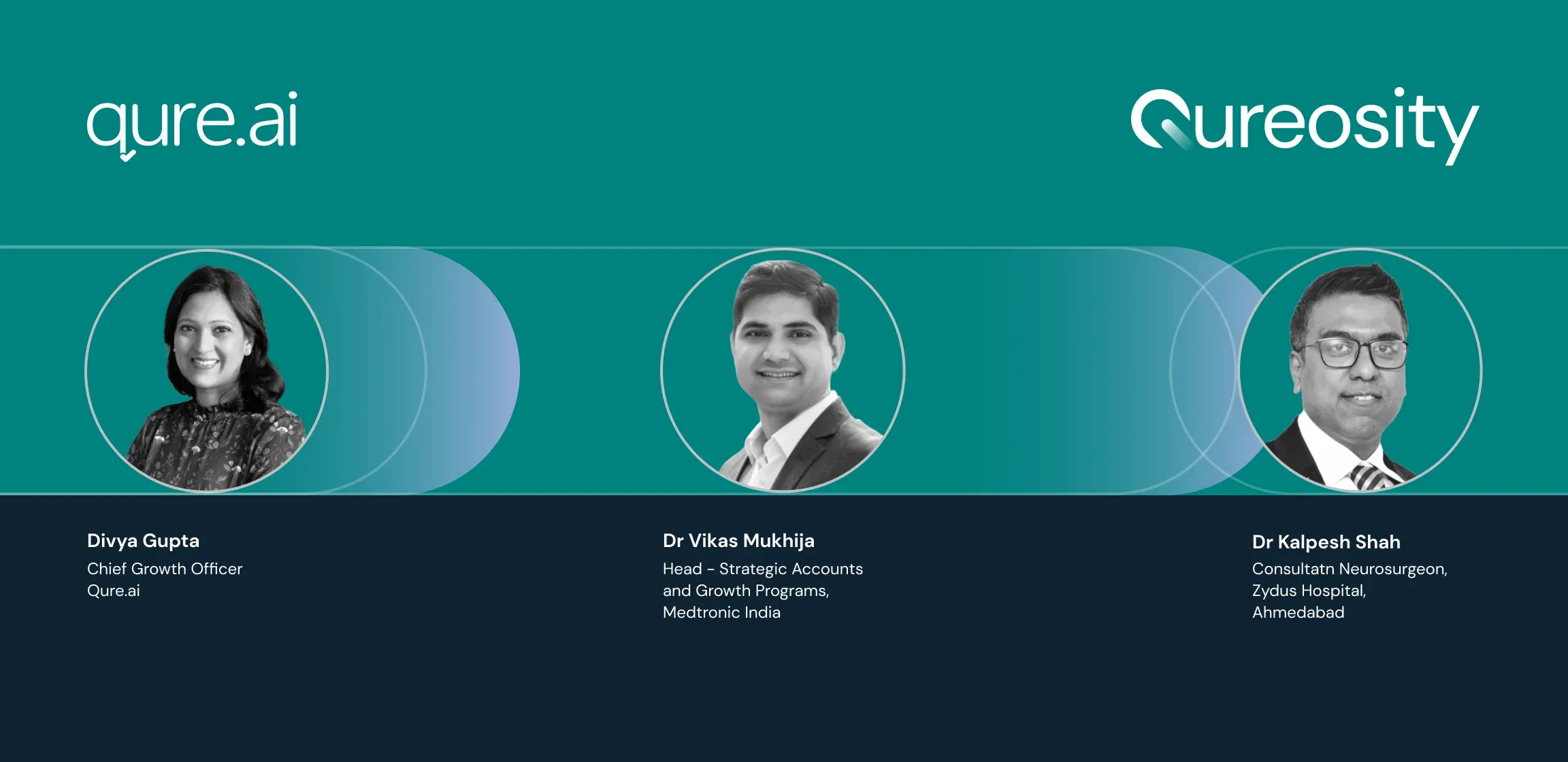Summary
Back
The webinar, hosted by Divya Gupta, Chief Growth Officer, Qure.ai, featured an in-depth discussion on the use of AI-powered hub-and-spoke models for enhancing stroke care in India, focusing on insights from Dr. Kalpesh Shah, Consultant Neurosurgeon, Zydus Hospital, Ahmedabad, and Dr. Vikas Mukhija, Head – Strategic Accounts & Growth Programs, Medtronic India.
The conversation highlighted the severe public health issue posed by stroke in India, the current treatment modalities, and the significant gaps in treatment accessibility and affordability. It introduced the concept of hub-and-spoke models integrated with AI to improve access to care, especially in underserved areas.
Introduction
Divya Gupta introduced the session and its esteemed panelists, setting the stage for a detailed exploration of stroke care in India, emphasizing the critical need for innovative solutions like AI-powered hub-and-spoke models to address treatment gaps. The discussion was set against the backdrop of the severe impact of stroke on the Indian population and the potential of AI-powered models to transform stroke care delivery.
Key Points of Discussion
- Stroke Care Challenge in India: Highlighted by Dr. Vikas Mukhija, the discussion began with an overview of the alarming statistics of stroke prevalence in India, the limited access to essential treatment options like mechanical thrombectomy, critical window for effective intervention, and the challenges posed by a lack of awareness, accessibility, and affordability. The conversation underscored the necessity for immediate and efficient stroke care.
- Hub-and-Spoke Model with AI Integration: The model's foundation is a central hub (advanced stroke treatment centre) linked to spoke centres (local healthcare facilities) through an AI-enabled platform. This setup aims to extend specialized care to broader populations, including those in rural or underserved areas. The AI solution is pivotal for faster diagnosis and coordination between the hub and spokes, ensuring timely treatment within the crucial window for stroke patients.
- Implementation Experiences and AI's Role: Dr. Kalpesh Shah shared practical insights from implementing this model at Zydus Hospital. He detailed the process of establishing connections with spoke centres, criteria for their selection, and the significant role of the Qure App in diagnosing and managing stroke cases efficiently. The app facilitated rapid, accurate assessment of stroke signs, enhancing the decision-making process for thrombolysis and mechanical thrombectomy, leading to a significant increase in patient treatment rates and improved outcomes.
- Challenges and Future Directions: The speakers addressed obstacles in scaling the model, such as market readiness, stakeholder engagement, and the need for substantial investments in technology and infrastructure. They also highlighted the importance of collaborative efforts among healthcare providers, technology developers, and policymakers to further the adoption of AI in stroke care.
Conclusion :
The webinar strongly advocated for the AI-powered hub-and-spoke model as a game-changing approach to stroke care in India. It concluded with a call for greater investment, policy support, and collaborative initiatives to expand the model's reach. This innovative approach not only promises to improve access to life-saving treatments but also sets a precedent for leveraging AI to address critical healthcare challenges, ultimately enhancing patient outcomes and the efficiency of the healthcare system.
